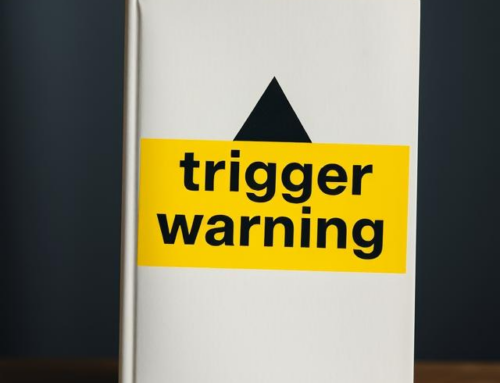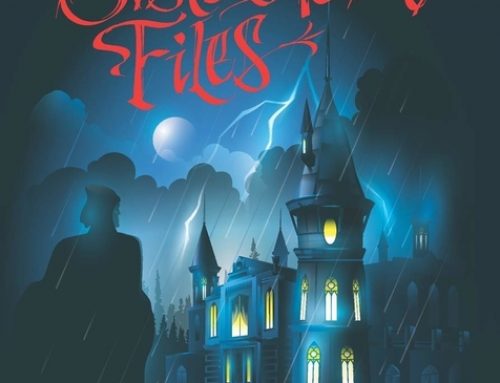Reprinted from my blog on book cover design.
Part 1: It Should Only Take Five Minutes
“It shouldn’t take more than five minutes or so. I saw a web designer do it once.”
Words that make any print designer cringe. I remember one client I had a few years ago who wanted seven or eight images combined to make a design and he told me it would take only a few minutes.
First, I had to find all these images. Just for the heck of it, you try a search on fotosearch.com, istockphoto.com, bigstockphoto.com or photos.com for some similar group of images, let’s say, “flower.” You can even get more specific and ask for “wild flower” and “isolated” or “object” or “masked” (isolated or object or masked means the flower is the only image, there is no background).
These flowers all have to be similar in style and the proper resolution, so you have to click through each one that has potential and take a closer look. You might have to visit two or three or a dozen stock art sites to find what you’re looking for, assuming it’s available at all and you don’t end up shooting your own images or hiring someone to do it.
Next, you need to make sure you can use the images the way you want (in this instance, print them on a book cover). Royalty Free doesn’t mean “use for anything” like so many people believe. There are all sorts of print and usage restrictions on Royalty Free images. For instance, many companies let you only print 250,000 – 500,000 copies of the image, so the client needs to be made aware of this and the contract has to reflect it, unless you have the client license the image, which is far easier. Some companies won’t allow images to be used on book covers without buying an extended license and many want the company or photographer credited, so you have to keep track of that information. This is all in the End User License Agreement (EULA) for each photo. Some of these are very long and complicated and filled with legalese. The EULA at Photos.com has 4,819 words, and that’s typical. I often have to write the company’s lawyers and ask for clarification. It usually only takes a day or so, but sometimes it can take much longer.
Obviously, that few minutes the client estimated this work would take was up several hours ago and we haven’t even started to design the cover.
The next issue that many non-designers don’t understand is that creating something for the web is vastly different than creating something for print. Print files are much larger and the color profiles are different. Using the convenient tools to click and remove backgrounds that so many graphic programs like Photoshop offer works great for web images, but rarely do they work so well for print images. It’s a tedious task and can take hours if the image is complicated or particularly bad.
It’s easy to see how a “five minute job” can take hours and even days if you’re formatting for print and doing it legally and professionally.
Part 2: Designer Time Sucks
In the first article I discussed the extraordinary length of time it can take to find images, read the license agreement and “clean up” artwork for use on book covers.
Another major part of the designer’s job that people don’t consider to actually be part of the job, is communication. I’m just looking over the eMails I have in my client portfolios (I save all eMails from clients) and here are some rough figures: For a front cover the average number of eMails seems to be around 20. For a full spread (front, back and spine) it’s around 60. For clients who also require collateral items such as sell-sheets, bookmarks and business cards, it goes over 100.
Now, let’s just say it takes two minutes to read each eMail (in fact, it can take considerably longer if there are links to be checked and files to refer to), and another two minutes to respond. That’s four minutes for each communication. Even for a front cover only that’s more than an hour spent on eMails and for the larger projects it’s more than six hours, or the better part of the work day.
As you can see, between looking for the right images and communicating with the client, a designer can easily put in a two to 10 hours without any problem. And that’s without doing any actual work on the design itself.
THE ACTUAL DESIGN WORK
Let’s assume we have found the images and have a pretty good idea of what the client wants. It’s time to start the design work. This is where things can go smoothly…or not.
One common issue designers deal with is trying to keep color constant. Almost all images are provided to us in RGB colors. Unfortunately, a professionally-designed book cover needs to be in another color gamut, usually CMYK. Sometimes switching between CMYK and RGB causes no issues at all, but sometimes you see a drastic change in color and either have to have the client agree to the new colors, or play with the settings until the CMYK display and print samples look close to what you’re seeing on the screen with the RBG settings. Again, we’re talking an hour here…maybe a day to get it right. It’s one of those design holes that you can literally get swept into, and upon finishing think it’s still two o’clock in the afternoon, when in actual fact it’s after eight, supper has gone cold, the kids are in bed and the dog has peed on the floor waiting for you to walk him.
Why don’t agencies sell images in CMYK? Well, because RGB, or red, green, blue are colors that your computer screen and TV use to display images. RGB files are also quite a bit smaller than the CMYK files, so since you can’t see CMYK jpgs or tiffs or gifs online and the files are very large, it makes little sense for stock agencies to use this format.
Part 3: Research
There are many hidden aspects of a designer’s job that take a lot of time. One of the most important, and often most time-consuming, is research for image accuracy. When a client has a book set in WWII for instance, and asks that a helmet be used on the cover, any old helmet won’t do. The designer needs to find a helmet that was actually in use during that time, in that country, with those particular soldiers. That means combing through online military sites, heading off to the local library, writing eMails and making phone calls.
I remember a few years ago someone wanted a hypodermic needle on the cover of a horror book. The publisher found one, everyone liked it…and only the author’s wife caught the fact that it was a dental needle and not one that would have been used in a hospital, where the book was set.
Many years ago someone pointed out that an early version of Lucy Maude Montgomery’s book Emily of New Moon, did not have a new moon on the cover.
It’s an issue with any medium. The movie “The Last House on the Left” featured a scene about a missing boat key. Astute viewers noted that the boat was a newer model Ski Nautique: they don’t use keys, a digital code punched into a keypad is required to start them.
Yes, it can take hours, days and even weeks, depending on how complex the cover is, to research every aspect of it, but it only takes one second for a knowledgeable person to notice a mistake, and a few minutes for him or her to post about it online.
Get an Editorial Review | Get Amazon Sales & Reviews | Get Edited | Get Beta Readers | Enter the SPR Book Awards | Other Marketing Services























Cathi,
Thanks for a great post. Yes, others don’t have any idea of what goes on “down in the trenches” of book design, and you have really blown the “it should only take a few minutes” comment out of the water. I’ve found over the years that I have to have an hourly rate in addition to my project fee because no matter how often you tell people the time involved, you can’t stop clients, even after approvals, saying things like, “Gee, I wonder how it would look in blue. Could you do that so I could have a look?”
Also a big fan of your covers. Thanks.
Cathi designed my cover (awesomely) and I am guilty of exactly this: “Gee, I wonder how it would look in blue. Could you do that so I could have a look?”
Henry,
LoL. I’m sure she won’t hold it against you. Who did the interior?
Me: http://www.scribd.com/doc/21575590/The-American-Book-of-the-Dead. I may upload another to Scribd b/c I see that page numbers are slightly off center. Sort of obsessive.
Nice job. Typographers are obsessive almost by definition.
Is this what the printed copies will look like? I think I’ll wait to get the dead tree version, much nicer to curl up with.
Thanks. Yep, the Scribd PDF is the same one I’m sending to Lightning Source.